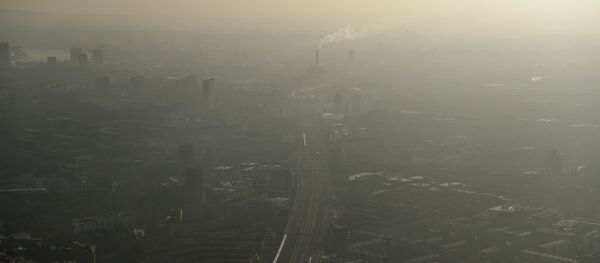Some 338 prefecture-level-and-above cities around China enjoyed good air quality for 70.5 percent of the month, down 12.4 percentage points from a year earlier, the Ministry of Environmental Protection said in a statement.
The average density of fine particulate matter PM2.5 in those cities stayed unchanged from last May at 38 micrograms per cubic meter, but the density of PM10 jumped 12.7 percent year on year to 89 micrograms per cubic meter, according to the ministry.
In early May, the country's northern areas witnessed the most severe sandstorm so far this year, which affected more than 10 provincial-level regions including Beijing, and covered an area of 1.63 million square kilometers.
Due to the sandstorm, 13 cities in the Beijing-Tianjin-Hebei region, saw the amount of days with good air quality drop by 23.5 percentage points to 39 percent in May. The density of PM2.5 and PM10 surged 14.9 percent and 59.4 percent, respectively, from a year ago, the ministry said.
The number of good air days in Beijing was down 12.9 percentage points to 48.4 percent last month.
A good air day is defined as an average daily Air Quality Index (AQI) of under 100 in Chinese air quality standards.
Haikou in south China's Hainan Province had the cleanest air of the country's 74 major cities, followed by Zhoushan/Lhasa, Xiamen, Lishui, Guiyang, Fuzhou, Taizhou/Zhuhai and Huizhou.
Tangshan in Hebei Province was the most polluted, followed by Handan, Shijiazhuang, Xingtai, Baoding, Zhengzhou, Tianjin, Hengshui, Xuzhou and Lanzhou.
China is addressing air pollution with stricter measures on emissions and an emphasis on clean energy.
This article was originally published in the Global Times.




